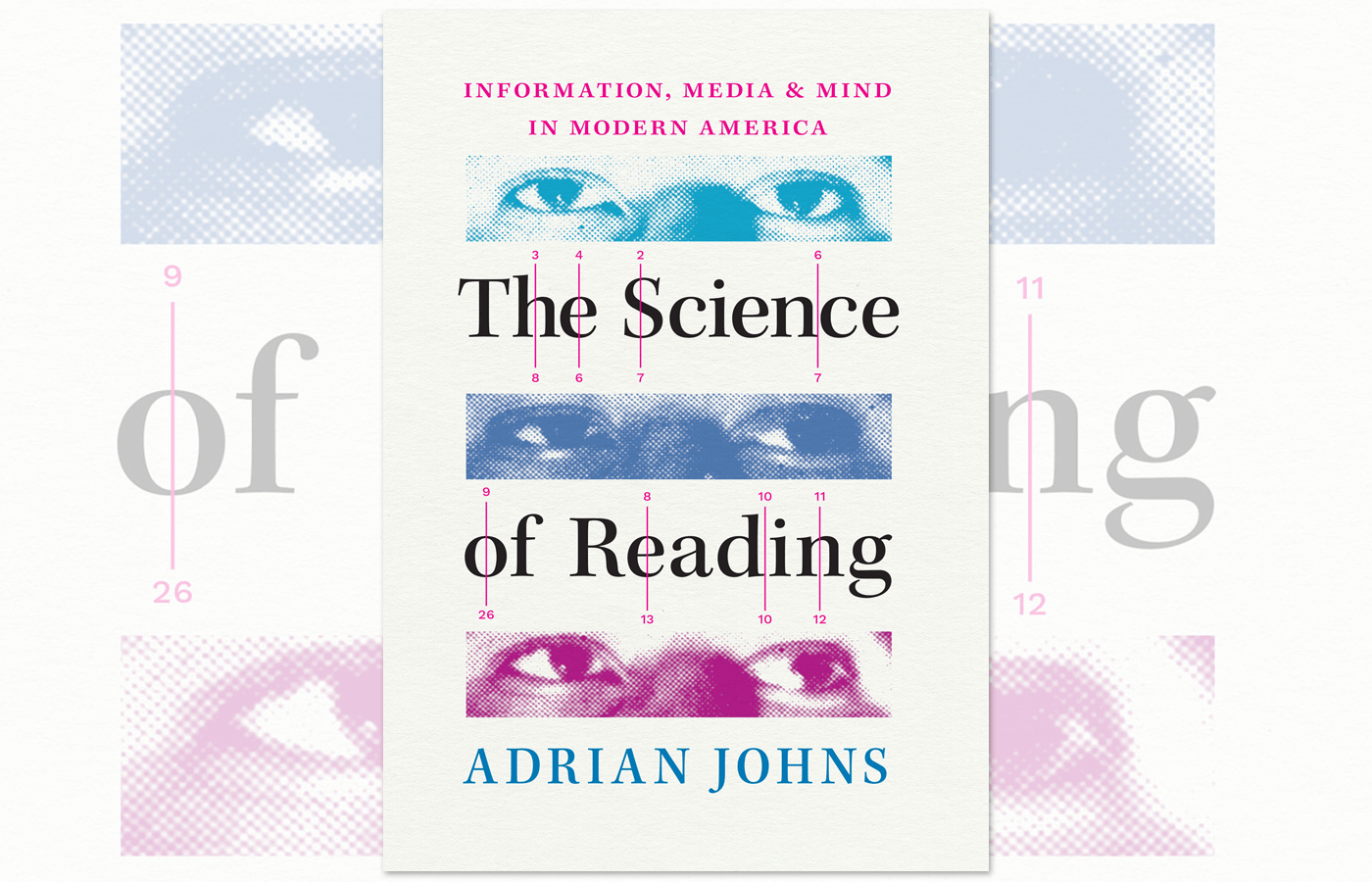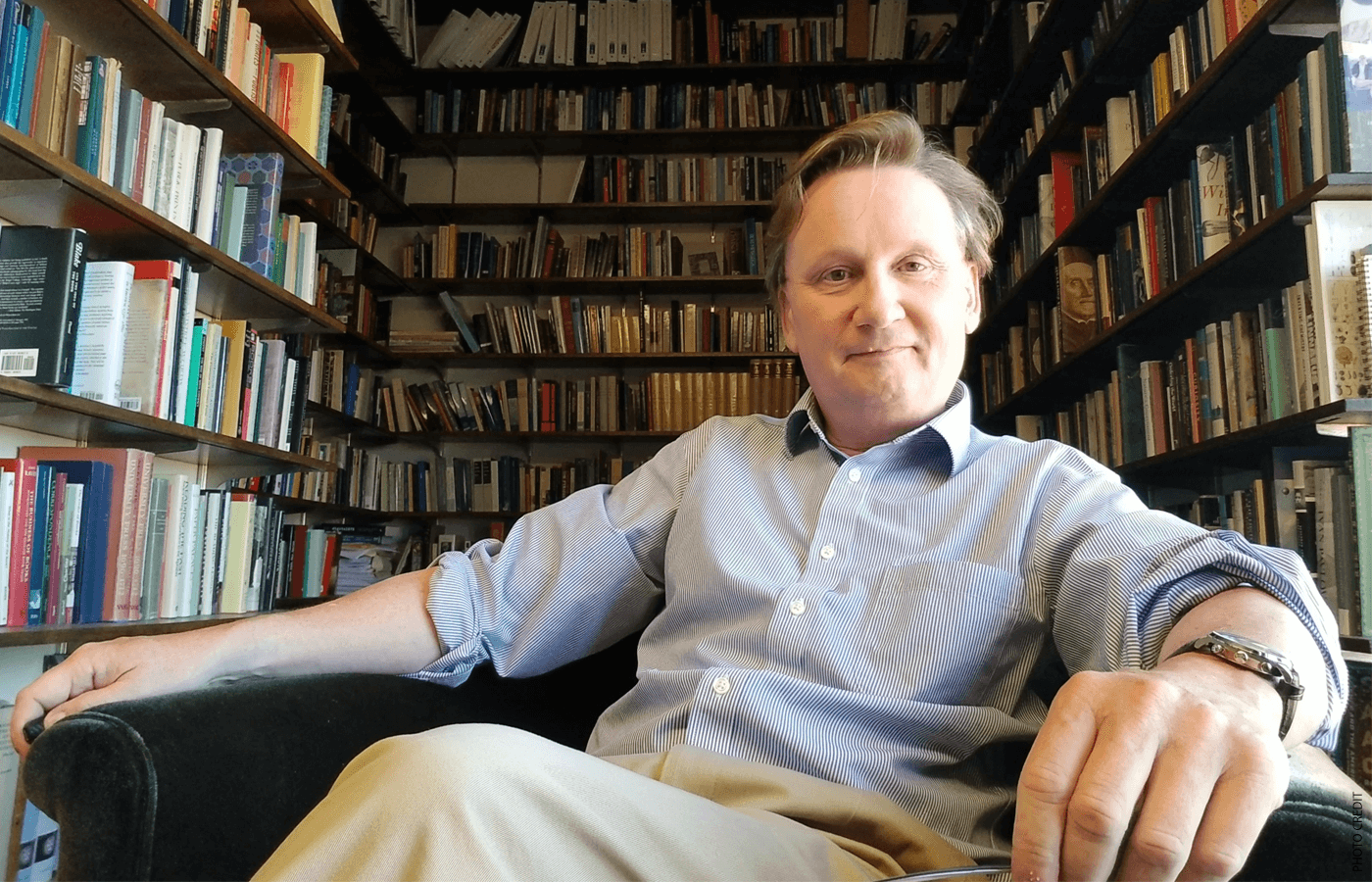
The Science of Reading: Information, Media, and Mind in Modern America
by Adrian Johns
The University of Chicago Press, 2023, $32.50; 504 pages.
As reviewed by Natalie Wexler
If you’ve been following the debates on the “science of reading” over the past several years, prepare to be surprised when you delve into Adrian Johns’s recent book on the subject.
In its current incarnation, the term “science of reading” is primarily used to refer to a substantial body of research showing that many children—perhaps most—are likely to experience reading difficulties unless they receive systematic instruction in phonics and other foundational reading skills in the early years of schooling. Those who advocate that approach are on one side of the debate.
On the other side are the proponents of “balanced literacy,” the currently dominant approach to reading instruction in the United States. The educators and literacy gurus who lead that movement acknowledge that phonics is important, but they maintain that it’s generally sufficient to teach bits of phonics as the need arises—perhaps when a child is stuck on a particular word—while also encouraging children to use pictures and context clues to guess at words.
That stance is a modification of the one taken by the philosophical predecessor of the balanced literacy movement, known as “whole language,” which swept the country in the latter part of the 20th century. Whole language maintained that children learn to read by grasping whole words rather than sounding them out using individual letters. Science-of-reading proponents say that the balanced-literacy school’s approach to phonics doesn’t align with science any more than whole language did.
The revelation in Johns’s book is that throughout most of the 20th century the contemporaneous science of reading was firmly on the side of whole language. Johns, a professor of intellectual history at the University of Chicago, spends almost the entirety of his 500-page book on that era. For a reader whose understanding of the subject has been formed in the recent past, the result is a topsy-turvy, Alice-in-Wonderland experience.
Johns begins his account with the 19th-century American psychologist James McKeen Cattell. Like many of his peers, Cattell engaged in precise measurements of physical reactions and often used himself as an experimental subject. Initially, that led him to attempt to read and write under the influence of various substances—hashish, alcohol, cannabis, morphine—and assess, as best he could, the results.

But it was another aspect of his research that had a lasting influence: he invented a device that limited a reader to viewing just one character at a time to ascertain the shortest time in which people could identify characters correctly. His experiments led him to conclude that readers perceived whole words—or even complete sentences—more quickly than individual characters. Later researchers repeatedly confirmed that finding.
Cattell’s device was the granddaddy of a slew of similar contraptions—the kinetoscope, the ophthalmograph, and, most notably, the eye-movement recorder and the tachistoscope—that, judging from the illustrations in the book, resembled medieval torture instruments. The objective, through about the 1960s, was the precise measurement of eye movements with the goal of increasing reading speed.
Johns does his best to make the minutiae of these painstaking experiments engaging, but it’s an uphill battle. He quotes William James as remarking of these studies—many of which were conducted in Germany—that they could only have arisen in “a land where they did not know what it means to be bored.”
And the question, as Johns eventually acknowledges, is whether this research made much difference. To the extent that scientists focused on improving the reading ability of the populace—which then, as now, was a cause for great concern—the assumption seems to have been that a faster reader was necessarily a better one. The focus was on training readers to move their eyes more quickly, leading to the “speed reading” boom of the mid-20th century. While some researchers still measure eye movements, merely increasing reading speed is no longer the goal.
On the other hand, the scientific consensus that readers grasped whole words rather than individual characters made a huge difference to reading instruction—and not a positive one. By the 1930s, Johns writes, “it was simply impossible to buy elementary books that were not written on the whole-word principle.” One prominent reading scientist, William S. Gray, was the moving force behind the Dick and Jane readers, the best-known embodiment of the “look-say” method, which predated whole language. Children who could memorize sentences like “Run, Spot, run” were thought to be learning to read.
Johns takes us on journeys down many and various byways. We learn, for example, that researchers applied what they knew about pattern recognition to help World War II pilots identify distant aircraft and avoid crash landings. We get a tale about how in the late 1930s, fading movie diva Gloria Swanson hatched a plan to develop a “luminous paint” by recruiting European inventors who were being persecuted by the Nazis. But readers may wonder what this information is doing in a book about the science related to reading.
Meanwhile, there’s a lot about the science of reading that Johns leaves out of his account—including applied science having to do with reading instruction. He mentions that Jeanne Chall’s famous survey of reading pedagogy research, published in 1967 as Learning to Read: The Great Debate, found that the consensus of some 30 experimental studies “was overwhelmingly in favor of including at least some phonics instruction.” But Johns doesn’t describe any of those studies or the researchers who conducted them. Similarly, when discussing Rudolf Flesch’s 1955 bombshell Why Johnny Can’t Read, Johns ignores the experimental studies cited there that—according to Flesch—demonstrate the superiority of phonics instruction.
This is a significant omission. The studies done by Cattell and his successors were, according to reading researcher Timothy Shanahan, accurate and reliable basic research: adult readers do recognize words more quickly than letters. The mistake was to conclude that children should therefore be taught to read by memorizing whole words. “Studies quite consistently have found decoding instruction to be advantageous,” Shanahan notes in his paper “What Constitutes a Science of Reading Instruction?”
Johns acknowledges that point only obliquely, remarking toward the end of the book that he is not questioning “the current consensus that a ‘decoding’ model is the preferred basis for teaching early readers.” To the extent that he discusses recent science-of-reading research—much of it focused on brain imaging—he seems skeptical. Neuroscience, he observes, “rarely has much to suggest about how to teach.” True, but Johns could have said the same about the basic research of the past that he spent the previous 400 pages detailing.
Johns’s skepticism about current reading research stems from his intuition that reading is about much more than decoding. Reading, he observes, “is a variegated and dynamic practice, not reducible to one basic and unchanging perceptual skill.” Indeed it is, but Johns has omitted from his account another hugely significant yet far more complex aspect of reading: comprehension.
In a way, that omission isn’t surprising, given that in current usage the “science of reading” often denotes only studies of decoding. But, as with his omission of experimental studies of phonics instruction, Johns’s failure to include any of the extensive research on reading comprehension renders his history seriously incomplete. That research, which includes studies on the roles of knowledge and metacognitive strategies in the reading process, began as far back as the 1970s.
Still, The Science of Reading is a thorough summary of at least part of the science of reading, if not all of it. It’s also a useful reminder that science can change radically over time.
Natalie Wexler is an education writer and author of The Knowledge Gap: The Hidden Cause of America’s Broken Education System—And How to Fix It.
This article appeared in the Fall 2023 issue of Education Next. Suggested citation format:
Wexler, N. (2023). The Evolving Science of How We Read: Survey has lots about eye-movement measurement, less about comprehension. Education Next, 23(4), 66-67.


